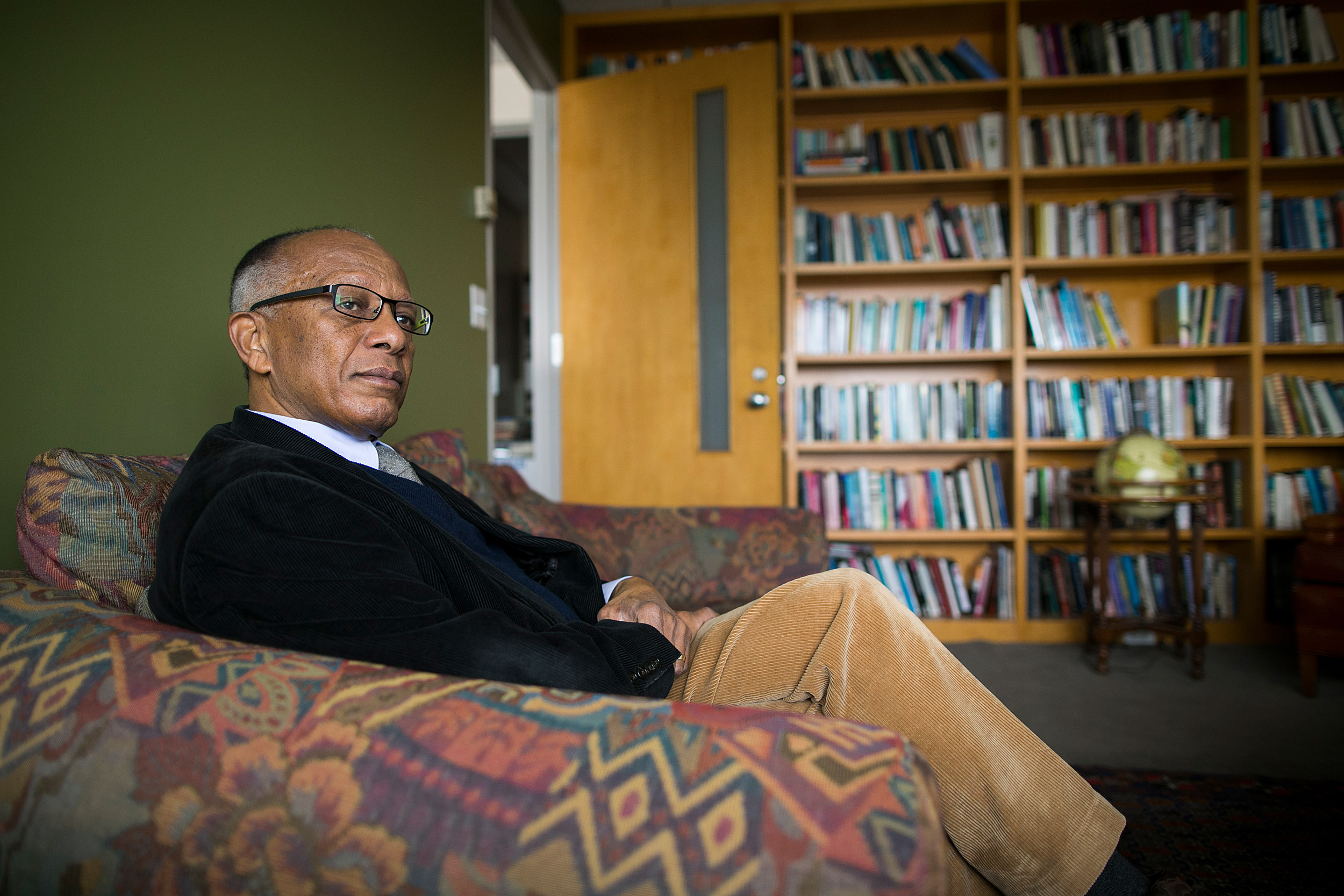
Orlando Patterson hosted the new annual lecture at Leverett House in honor of the late Archie Epps.
Stephanie Mitchell/Harvard file photo
‘Stunning progress’
The public arena has made great strides toward diversity — as Harvard’s evolution has shown — but some areas need to catch up, Patterson says
Social change can often seem to move at a snail’s pace, but longtime Harvard sociologist Orlando Patterson told a campus audience Sunday that the University and the larger American society have come a long way in embracing diversity in the past 50 years.
“It’s an amazing phenomenon, just stunning progress,” Patterson, John Cowles Professor of Sociology, said of the strides Harvard has made toward becoming more inclusive of African Americans and other minorities.
Recalling the overwhelmingly white campus he encountered when he arrived in 1970, Patterson said that now, “When I go to my lectures or just walk across Harvard Yard, it’s just night and day. It’s wonderful to see this sort of mosaic of faces — black faces, Asian faces, [LatinX] faces. We take it for granted now.”
Patterson offered his reflections on 50 years of diversity at Harvard and the U.S. as the first speaker in a new annual lecture that Leverett House is hosting in honor of the late Archie Epps, Harvard College dean of students from 1971‒1999 and one of Harvard’s first high-ranking black administrators.
Starting his Harvard career in 1961 as a Middle Eastern studies teaching assistant, Epps began a decade-long stint as resident music tutor and later assistant senior tutor at Leverett House. During those years, he headed Leverett’s opera society.
Epps was instrumental in bringing Malcolm X to speak at the House in 1964, and helped bring James Baldwin and Ralph Ellison to campus. He also published “Malcolm X, Speeches at Harvard” in 1967, as well as Harvard’s first handbook on race relations in 1992.
The lecture series will focus on diversity, inclusion, and community, according to Brian D. Farrell, Leverett House co-faculty dean with Irina Ferreras. Farrell is also director of the David Rockefeller Center for Latin American Studies and the Monique and Philip Lehner Professor for the Study of Latin America in the Department of Organismic and Evolutionary Biology.
“We feel it’s important that students know the history here at Harvard so they can appreciate the present in order to be able to change the future,” said Farrell, who in addition to Ferreras worked on the planning and execution of the event with Leverett House sophomore Joy Nesbitt and the Diversity Peer Educators from Quincy and Mather Houses.
Patterson said it is difficult to fully appreciate the progress toward greater racial diversity and inclusion in the nation since the early 1960s, a change he credited to the Civil Rights Movement.
“Young black Americans can be forgiven for being almost skeptical about the achievement, but this was a revolution,” he said, citing the integral role that African Americans now play in politics and culture. “It’s hard to imagine American civilization without black folks.”
“We feel it’s important that students know the history here at Harvard so they can appreciate the present in order to be able to change the future.”
Brian D. Farrell, Leverett House co-faculty dean
Patterson cautioned, though, that the transformation has been almost entirely within the public arena, not the private realm, citing continuing segregation in neighborhoods and schools. He said that over the past five decades Harvard has reflected the nation’s evolution through five levels of diversity, a continuum he said begins with separatism and culminates in integration.
In the 1960s, he explained, Harvard began moving toward greater diversity and inclusion. Prodded by black student activists, by the late ’60s the University had accelerated that effort, founding an African American Studies department and hiring its first African American professors. Patterson said statistics help tell the story of the progress since then.
Harvard now ranks 166th among 2,718 colleges and universities in the ethnic diversity of its students, and its most recent class was its most diverse, with 22.9 percent Asian Americans, 15.2 percent African Americans, and 12.3 percent LatinX.
“What the black students in 1968 [wanted was for] the number of black students to be representative of the size of the population,” Patterson said. “By God, it took 40 years, but they did it.”
Additionally, women now comprise about half of Harvard’s students and faculty. Harvard also ranks 18th nationally in the geographical diversity of its students. And while it has 23 times as many high-income students as low-income students, the University ranks fourth in the proportion of its students from lower-income families, Patterson said.
Other signs of progress Patterson cited the 43 faculty members the African American Studies Department now has. The department sits between the Arts and Humanities and Social Sciences, and many of its professors have dual appointments.
While celebrating those gains, Patterson expressed concern that Harvard’s progress in diversifying could be set back if the courts rule against the University in the lawsuit brought by Edward Blum and the organization he created, Students for Fair Admissions, over its admissions practices. “The consensus of opinion is that if the courts … order Harvard to change what has been one of the most successful programs for diversity,” he said, “the whole thing will fall apart.”
Patterson, who knew Epps in the early 1970s, recalled him as a “dapper man” who favored pinstriped suits and bow ties, and a “wonderful musician with a beautiful tenor voice.”
Epps strongly believed in integration, a value reflected in his own life and relationships at Harvard, Patterson said. “He was a great admirer of Martin Luther King and took seriously King’s doctrine of the ‘beloved community,’” he said. “I think Archie saw Harvard as a model of at least his image of a beloved community in which integration was the ideal, if far from the reality at that time.”







